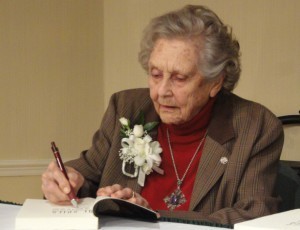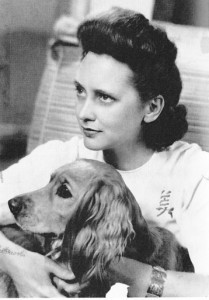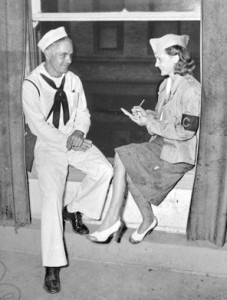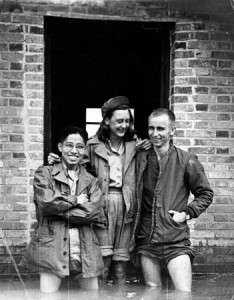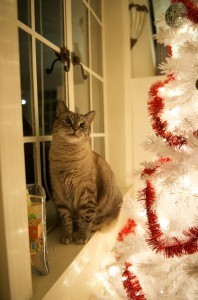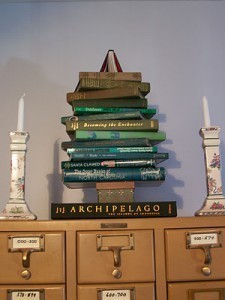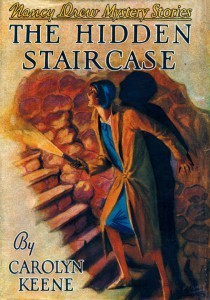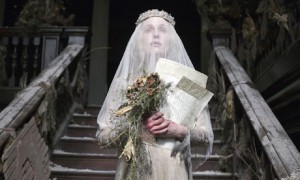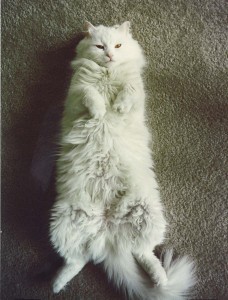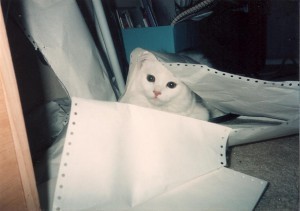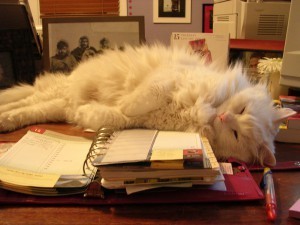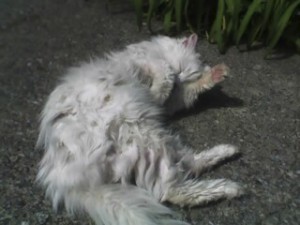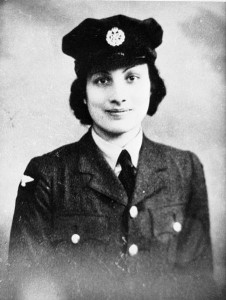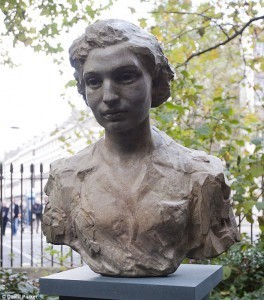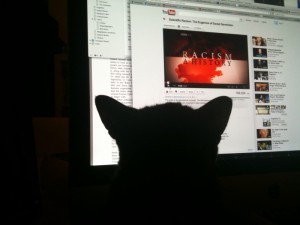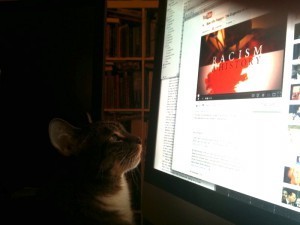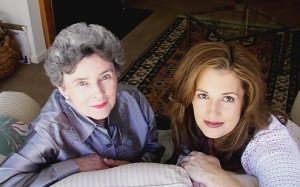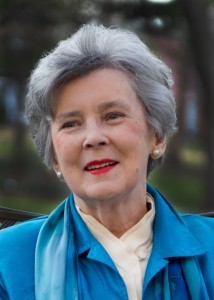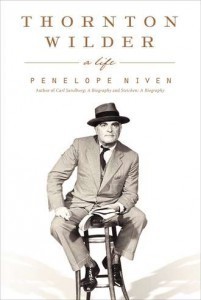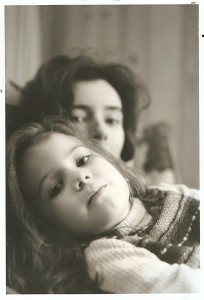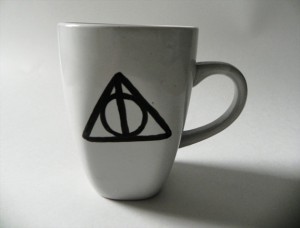Jennifer Niven's Blog, page 550
December 13, 2012
71 years later, a spy girl’s haunting account of Pearl Harbor
Becoming Clementine was read in its early stages by a woman named Betty McIntosh. At 97, she is America’s most famous living female spy. During World War II, she served in the OSS and, after the war was over, in the CIA. She has also authored four books, including one named Undercover Girl, a memoir of her years as a secret agent. When she offered her review of the book, I was (understandably) petrified. After all, she had lived what I’d only researched and written about. She was there.
Here is what she said:
“Reading this splendid novel allowed me to vicariously share wartime adventures with a sister spy. Velva Jean had everything that was required of us operatives in OSS (Office of Strategic Services), a forerunner of the CIA. She had the courage to survive undercover behind enemy lines in constant danger. She carried out life-threatening orders without question and bravely faced capture. Becoming Clementine is a spellbinding spy saga.”
Relief. Tears. Gratitude. That’s the only way I can describe how I felt.
Before she was a spy, Betty McIntosh was a reporter. Elizabeth Peet McIntosh grew up in Honolulu, where she learned Japanese and yearned to travel and have adventures overseas. Her father worked for the Washington Herald as a sports editor, and Betty, as she was called, soon followed him into reporting. She was working as a correspondent for Scripps Howard near Pearl Harbor when the Japanese attacked. She soon left Hawaii for the Scripps Howard bureau in Washington, D.C.
In 1943, she was covering an exhibit of sleeping bags stuffed with chicken feathers at the Department of Agriculture (not exactly the grand adventure she’d dreamed of as a girl), when she was approached by an official from the OSS. He said, “Are you interested in a secret overseas assignment?” She didn’t hesitate: “Yes.”
At the OSS training facility in Bethesda, Maryland, she learned to shoot a .32-caliber pistol. She swore an oath never, under any cost, to reveal OSS secrets. And then she was sent to India. Her mission: to create deadly propaganda by concocting “fake but authentic-sounding rumors, news stories and radio reports to make the enemy citizenry think their troops were losing and that they should give up.” From there, she was sent to China (with fellow spy Julia Child), where she unknowingly participated in a plot to kill Japanese soldiers, delivering a bomb disguised as coal to a Chinese secret agent. She was one of the few women assigned to the OSS division of Morale Operations.
This past week, on December 7, Betty McIntosh’s account of the attack on Pearl Harbor– deemed too disturbing and graphic at the time she wrote it– was published for the first time.
Honolulu after Pearl Harbor: A report published for the first time, 71 years later
By Elizabeth P. McIntosh
On Dec. 7, 1941, when Japanese planes attacked Pearl Harbor, I was working as a reporter for the Honolulu Star-Bulletin. After a week of war, I wrote a story directed at Hawaii’s women; I thought it would be useful for them to know what I had seen. It might help prepare them for what lay ahead. But my editors thought the graphic content would be too upsetting for readers and decided not to run my article. It appears here for the first time.
For seven ghastly, confused days, we have been at war. To the women of Hawaii, it has meant a total disruption of home life, a sudden acclimation to blackout nights, terrifying rumors, fear of the unknown as planes drone overhead and lorries shriek through the streets.
The seven days may stretch to seven years, and the women of Hawaii will have to accept a new routine of living. It is time, now, after the initial confusion and terror have subsided, to sum up the events of the past week, to make plans for the future.
It would be well, perhaps, to review the events of the past seven days and not minimize the horror, to better prepare for what may come again.
I have a story to tell, as a reporter, that I think the women of Hawaii should hear. I tell it because I think it may help other women in the struggle, so they will not take the past events lightly.
I reported for work immediately on Sunday morning when the first news — Oahu is being attacked — crackled over the radio, sandwiched in a church program.
Like the rest of Hawaii, I refused to believe it. All along the sunny road to town were people just coming out of church, dogs lazy in the driveways, mynas in noisy convention.
Then, from the neighborhood called Punchbowl, I saw a formation of black planes diving straight into the ocean off Pearl Harbor. The blue sky was punctured with anti-aircraft smoke puffs. Suddenly, there was a sharp whistling sound, almost over my shoulder, and below, down on School Street. I saw a rooftop fly into the air like a pasteboard movie set.
For the first time, I felt that numb terror that all of London has known for months. It is the terror of not being able to do anything but fall on your stomach and hope the bomb won’t land on you. It’s the helplessness and terror of sudden visions of a ripping sensation in your back, shrapnel coursing through your chest, total blackness, maybe death.
The vision of death became reality when I was assigned to cover the emergency room of the hospital.
The first victims of the Japanese-American war were brought there on that bright Sunday morning.
Bombs were still dropping over the city as ambulances screamed off into the heart of the destruction. The drivers were blood-sodden when they returned, with stories of streets ripped up, houses burned, twisted shrapnel and charred bodies of children.
In the morgue, the bodies were laid on slabs in the grotesque positions in which they had died. Fear contorted their faces. Their clothes were blue-black from incendiary bombs. One little girl in a red sweater, barefoot, still clutched a piece of jump-rope in her hand.
Firefighters from the Hickam Air Force Base carried the victims in. The men had a red T marked on their foreheads, mute testimony of the efficiency of first-aiders in giving tetanus shots to ward off lockjaw. The body of a man with a monogrammed shirt, H.A.D., was marked DOA (dead on arrival), trundled off to make room for victims who were still breathing.
There was blood and the fear of death — and death itself — in the emergency room as doctors calmly continued to treat the victims of this new war. Interns were taping up windows to prevent them from crashing into the emergency area as bombs fell and the dead and wounded continued to arrive. I had never known that blood could be so bright red.
Returning to the city, I felt a mounting sense of fear as Honolulu began to realize that more was in the air than an Army alert.
I went to a bombed store on King Street, where I often, in times past, stopped for a Coke at the cool drug counter.
Seven little stores, including my drugstore, had nearly completely burned down. Charred, ripply walls, as high as the first story, alone remained to give any hint of where the store had been. At the smashed soda fountain was a half-eaten chocolate sundae. Scorched bonbons were scattered on the sidewalk. There were odd pieces lying in the wreckage, half-burned Christmas cards, on one, the words “Hark the Herald” still visible. There were twisted bedsprings, half-burned mattresses, cans of food, a child’s blackened bicycle, a lunch box, a green raveled sweater, a Bang-Up comic book, ripped awnings.
I ran out of notepaper and reached down and picked up a charred batch of writing paper, still wet from a fire hose. There was, too, the irony of Christmas tinsel, cellophane, decorations. A burned doll, with moving eyes, singed curls and straw bonnet, like a miniature corpse, lay in the wreckage.
That Sunday after dusk there was the all-night horror of attack in the dark. Sirens shrieking, sharp, crackling police reports and the tension of a city wrapped in fear.
Then, in the nightmare of Monday and Tuesday, there was the struggle to keep normal when planes zoomed overhead and guns cracked out at an unseen enemy. There was blackout and suspicion riding the back of wild rumors: Parachutists in the hills! Poison in your food! Starvation and death were all that was left in a tourist bureau paradise.
I talked with evacuees. From Hickam, a nurse who had dropped to the floor in the hospital kitchen as machine gun bullets dotted a neat row of holes directly above her; from Schofield, a woman who wanted me to send word to her sweetheart “somewhere in Honolulu” that she was still alive; from Pearl Harbor, a nurse who wanted scraps of paper and pencil stubs to give to the boys in the hospital who had last messages they wanted sent home; a little girl named Theda who had a big doll named Nancy and who told me in a quiet voice that “Daddy was killed at Hickam.”
At the office there were frantic calls from all sorts of women — housewives, stenographers, debutantes — wanting to know what they could do during the day, when husbands and brothers were away and there was nothing left but to listen to the radio and imagine that all hell had broken out on another part of the island.
It was then that I realized how important women can be in a war-torn world.
There is a job for every woman in Hawaii to do.
I discovered that when I visited the Red Cross centers, canteens, evacuee districts, the motor corps headquarters.
There is great organization in Honolulu, mapped out thoughtfully and competently by women who have had experience in World War I, who have looked ahead and foreseen the carnage of the past seven days and planned.
The post 71 years later, a spy girl’s haunting account of Pearl Harbor appeared first on Jennifer Niven : Everything Books.
December 10, 2012
Readin’ around the Christmas tree
I’m allergic to real Christmas trees, which means that all my life I’ve had an artificial one. This isn’t as bad as it sounds– the tree doesn’t turn brown, you don’t have to water it, and there aren’t any pine needles to clean up.
Also, about half of the ornaments come from my childhood, which means the tree and its contents have great sentimental value. There are the ones I made myself in grade school, the cloth globes from Japan, the pink rocking horse I tried to eat because I thought it was candy, the angel who sat at the top of my very first tree, and who still sits atop my tree today. I even have my dad’s favorite Santa ornament from when he was a boy.
Last week, we decorated our Christmas tree (as you can see, Rumi the cat helped us), and it got me to thinking: what if I made a tree out of books? What better way to combine two of my favorite things– Christmas and reading?
Here’s some inspiration:
(Library tree from the Gleeson Library in San Francisco)
(For those with limited space and a red wall)
(A German book tree)
(From the Moravian Book Shop in, of all places, Bethlehem, Pennsylvania)
(A little tree for those limited on space)
(A book tree centerpiece)
(The perfect use for those first editions)
(A tree for your office)
(A tree of books)
(A printed paper pine tree)
The post Readin’ around the Christmas tree appeared first on Jennifer Niven : Everything Books.
December 3, 2012
When a bookcase isn’t just a bookcase
When I was growing up, I loved Nancy Drew. Her stories were always full of tunnels and secret passageways and walls that became doors if you knew just where to press. These tunnels and passageways meant mystery and danger and, of course, excitement. I love this kind of thing so much, I even wrote a secret staircase into Becoming Clementine:
Beyond the glass case was a door, and Gossie opened this and I followed her inside. Bookcases stood on three walls. She shut the door tight behind us and plucked a book out of the middle shelf. I watched as she pressed a button in the wood. Another door swung open, which led into a small room. Rising up out of the middle of it, like a ship’s hatch, was a narrow set of stairs with no railing…
As I’ve been re-envisioning my office this past weekend, I find myself daydreaming about having my very own bookcase that leads to a secret room beyond…
Kind of like these:
The post When a bookcase isn’t just a bookcase appeared first on Jennifer Niven : Everything Books.
November 30, 2012
Spring cleaning
When Thornton Wilder finished writing his novel Theophilus North, he told friends: “So I finished the plagued book. I’m accustomed to turn my back on a piece of work once it’s finished– but it’s something new for me to feel empty-handed and deflated– to wake up each morning without that sense of the task waiting for me on my desk. Daily writing is a habit– and a crutch and a support; and for the first time I feel cast adrift and roofless without it. I hate this and am going to get back into a harness as soon as I can.”
I couldn’t have said it better. It is amazing how sad and purposeless and lost you feel after finishing a manuscript, even when that manuscript still has many steps to go through before publication. I handed the fourth Velva Jean novel (American Blonde) over to my editor in mid-September. Soon, she will send it back to me with her first round of notes and we will go back and forth till the novel is ready.
There is a mountain of other writerly work to be done. Even without American Blonde on my desk, I am as busy as ever. However, I still feel like Dickens’s Miss Havisham, wandering around my office, bereft and lonely, still dressed in my writing clothes, searching for the next idea. I have many, many, many of them, but until I’ve settled on one and am lost inside it, that feeling of being adrift and roofless will linger.
Usually, there is only one thing to do. Clear away the cobwebs and clean the office.
To offer some perspective, the only time I ever feel like cleaning is when I finish a book. I am not someone who vacuums to relax (like my best friend), or who scrubs the refrigerator shelves when she’s angry (like another friend of mine). Growing up, you couldn’t even tell that I had a floor because every inch of my carpet was covered in clothing, books, and records.
But to make ready for whatever comes next, I need to clean my office. Not just dusting and straightening– we’re talking some sort of overhaul. I need to clear away some of the clutter, reorganize bookshelves and closet, move my desk, reconfigure the furniture and general layout. In short, new book, new office. It happens every time.
Soon enough, I’ll be happily back in that harness, and I might as well be ready for it.
The post Spring cleaning appeared first on Jennifer Niven : Everything Books.
November 26, 2012
George and the office supplies
Years ago, I was lucky enough to have a fluffy, white dirtball of a cat named George (and his pristinely gorgeous brother, Percy). George was truly the most remarkable cat I’ve ever known. He was a real man’s man cat. Even guys who thought cats were silly, guys who claimed they only liked dogs and real dogs– not baby, stupid ones– liked George. For one thing, he was dirty. He didn’t believe in grooming. He was like a Marlboro kitty. He swaggered when he walked, sometimes pulling out his back hair as he sauntered, spitting it aside like a cowboy chewing tobacco. He was naturally gorgeous, but his hair stood up in patches from the mats that he refused to tend to, and his feet were always dirty from walking in dirt during his supervised trips outside.
His voice was gruff and impatient. When the TV was too loud or I was talking too raucously, George gave me an earful. He didn’t like you to be loud. I had to always keep the television on volume 12. One notch higher, and George would chirp a blue streak.
You could carry on conversations with him. The two of us used to sit outside together under the cherry tree in our front yard and talk. I would talk, and he would answer. He would say something, and I would reply. Sometimes I said stupid things, and he would give me a withering look. He had a knack for making me feel stupid. He was the smartest creature I have ever met, feline, human, or otherwise.
When he was six, he was diagnosed with a heart condition by the man who invented animal cardiology. George was given six months to live, but he lasted– in true, stubborn George fashion– till fourteen with a heart three times its normal size. Teams of doctors studied him. He was a medical marvel.
For a while now, I’ve been collecting stories for a George book about his many, many lives. Here is one of my favorites…
Life Number Four– The Cat Bell
By the time George was three, I was a graduate student at the American Film Institute, where I was studying screenwriting. On May 12, 1995, it was my turn to deliver my first full-length script to my writing class, and I had all seven copies, including one for the teacher, ready and waiting by the front door. As I walked through the living room to the door, I passed by George, who was hunched up on the floor, wheezing like a bellows. Percy sat next to him looking concerned and faintly annoyed, and every now and then, he leaned over and licked George vigorously on the head. This only made George wheeze harder.
My first thought was: Dear God. What has he eaten now?
I watched him a minute to make sure this was really something and not just a false alarm, like the time I had skipped class to take George to the vet because he was limping. I had rushed him there, breaking all kinds of speed limits and making the clinic in record time, and when we arrived, the limp had disappeared.
When I was sure that this was in fact legitimate—that he really and truly couldn’t breathe—I called my friend and classmate Annie and told her I was having an emergency. She said, “What did George eat this time?” I laughed politely before hanging up the phone, then I wrapped George in a towel (since the age of two, he had refused to ride in a cat carrier), grabbed my purse, and ran to my car.
The ladies behind the front desk spotted us pulling into the parking lot and immediately readied our room for us before I had even reached the door. George and I were ushered back to the examination room and his wheezing grew worse. He looked at me as if asking why in the hell I wasn’t doing something about it. I talked to him, telling him everything would be okay, and that whatever he had swallowed or done to himself would soon be fixed.
George’s vet appeared. He was blond and handsome and looked exactly like Bjorn Borg. He frowned and studied George, then he ran his hands over George’s body, felt his chest, listened to his heart. “He appears to have eaten something he shouldn’t have,” he said. “I’m going to take some X-rays to see if we can figure out exactly what that something is.”
When he left the room with George, I sank onto a chair and resisted the urge to put my head in my hands and cry. How much would this visit cost? The adoption fees at Foster Friends for Pets had been $40 each for George and Percy. That had included neutering and shots and a free month’s supply of Science Diet dry food. I had thought it was such a bargain.
I looked at the anatomical and skeletal charts on the walls. I looked at the pictures that hung next to them—photos of smiling dogs and neatly posing cats. Their expressions seemed to say the same thing: “We are so well behaved. We are so normal. We have all our lives. We are not at all expensive. The people at Santa Monica Vet love us because we never put ourselves or our human parents in mental, emotional, or financial peril.”
Dr. Borg returned momentarily and set George down on the examining table. “I’ll be back,” he said.
George and I waited. “I just want you to know,” I said to George, “that I am not talking to you.” George’s wheezing was quieter. He picked up one dirty paw, pulled a remnant of a pink foam toy ball out from between his toes, and ate it. I didn’t even attempt to stop him.
Dr. Borg came back into the room, tanned and pony-tailed, and waved his hand. “Come with me,” he said, “and bring him with you.”
I picked up George and followed Dr. Borg into the next room where he slid the X-ray into a machine on the wall. He flipped the switch and the fluorescent lights came on, illuminating George’s tiny skeleton. There were his ribs, his spine, his lungs, his heart, and a mass of other objects I couldn’t recognize.
“Oh,” I said. “He is so cute. Look how little everything is.”
Dr. Borg frowned at me and then at the X-ray. “He has apparently eaten a cat bell,” he said. I thought immediately of Percy’s favorite toy—a white fluffy blob stuffed with cotton and a thin tail. A tail that used to have a bell. Dr. Borg pointed to the cat bell, which sat, quite clearly, in the middle of George’s stomach.
“Wow,” I said. “It really is clear as… well, as a bell.”
George squirmed and I tightened my hold on him. Please be good, I thought. Please do not shame me more than you already have. Especially not in front of this man who looks just like Bjorn Borg.
Dr. Borg moved his pen pointer away from the bell and toward the strange, indiscernible mass. “I don’t, however, think the bell has done as much damage as the rubber bands.”
Rubber bands?!
“How many are in there?” I said. I tried to sound as if we were talking about something ordinary, like the weather.
“I can’t quite tell. But that’s not all.”
“It’s not?”
“No.” He pointed just left of the mass. “Paper.” He pointed again. “Paper clips.” And pointed again. “Thumbtacks.”
The entire contents of my home office supply drawer were inside George’s stomach.
“I am afraid,” Dr. Borg said, his voice grave, “that your cat is orally fixated.” He made it sound shameful and frightening. The way he said it made a shiver run down my spine. Orally fixated. By his tone, I knew I should be mortified for both George and myself.
The front desk staff let me borrow the phone. I stood at the counter, George under one arm, and dialed my mother, who lived in another state. “George has eaten a bell,” I said. “And some office supplies. The doctor said he is orally fixated.” I whispered this last part, terrified that someone might hear me.
“Is he all right?” My mother’s voice was concerned.
“He will be. They can remove the thumbtacks and the paper clips, but they can’t do a full-fledged operation because of the rubber bands, so they said he will have to pass the bell himself. His body will either absorb the other things or not.”
“How much is it going to cost?”
“Eight hundred and sixty-eight dollars.” It was an amount that I, a poor graduate student living on student loans, could not afford, and an amount that I knew my mom could not afford either.
On her end of the line, I heard a shuffling of papers. I waited. “Well,” she said finally, her voice bright and positive. “There’s not enough on the emergency Visa, but there should be enough on the Optima card. You just tell George this is an advance on his Christmas present.”
Eight hundred and sixty-eight dollars later, George was thumbtack- and paper clip-free, and officially the most expensive cat we’d ever had. The rubber bands, Dr. Borg said, would have to stay there unless they came out of their own accord. We just had to hope that they wouldn’t wrap around any vital organs. The bell was placed too precariously near those vital organs to be moved. Dr. Borg gave George some medicine which would “encourage him to pass the bell,” and told me to check George’s litter box periodically.
I took George home and cut every bell off every toy and took the pile of them outside to the apartment complex dumpster to throw them away. I didn’t trust George not to get them out of the trash. Afterward, I locked my office supplies in a closet.
That night, George and Percy and I curled up on the couch, George on one side, Percy on the other. Percy, even though he hated being held, loved to snuggle. George did not. But that night, he put his paw on my leg and sat with me while I watched a movie. “You’re welcome,” I said.
The next day, I stood in front of the bathroom mirror, head upside down, drying my hair with the blow dryer. Something shiny caught my eye. There, in the litter box at my feet, sat an eight hundred and sixty-eight dollar cat bell.
The post George and the office supplies appeared first on Jennifer Niven : Everything Books.
November 19, 2012
Tribute to a spy princess
When Ada Blackjack returned from the Arctic, the only survivor of an ill-fated expedition, she was uncomfortable being called a hero. “Brave?” Ada would say whenever people would praise her courage. “I don’t know about that. But I would never give up hope while I’m still alive.”
A number of real-life female spies inspired Velva Jean’s harrowing and heroic journey as a secret agent in Becoming Clementine. One of them was a beautiful and courageous Indian princess named Noor Inayat Khan.
On November 8, seven decades after her death, a statue was unveiled in London. The statue bears tribute to the courageous Princess Khan– Britain’s only female Muslim war heroine– who was the first woman radio operator dropped into France by the SOE.
She was the descendant of Tipu Sultan, the 18th century ruler of Mysore. Her father was Indian, her mother American. Noor Inayat Khan grew up in luxury and comfort, playing the harp and writing stories. She later studied child psychology at the Sorbonne.
At the end of 1940, she and her family fled France (escaping to England by boat) before the government surrendered to Germany. Khan joined the Women’s Auxiliary Air Force as a wireless operator, and was recruited by the SOE in 1942. She was sent back to Paris a year later. There, under the codename Madeleine, she sent vital messages to London while trying to evade the Germans. In October 1943, she was arrested and tortured, but she refused to talk. In September 1944, at Dachau, she was executed by the SS. She was thirty.
England’s Princess Royal dedicated the statue at Gordons Square not far from the house where Noor was living when she left on her last mission. Sir David Richards, the Chief of Defence Staff, said at the November 8 ceremony, “We owe our freedom to women like Noor Inayat Khan.”
In an era when most women were expected to stay at home and tend to the house and the children, women like Noor Inayat Khan were ahead of their time. Standing in Gordons Square, Princess Anne said she hoped the new statue will “remind people to ask: Who was she? Why is she here? And what can we achieve in her memory?”
Noor, like the thousands of other women who spied in World War II, simply did what she had to do in a terrible time under extraordinary circumstances. She would probably have shared Ada Blackjack’s discomfort at being called brave. Her last word, as the German firing squad raised their weapons, was simple and unyielding: Liberte.
The post Tribute to a spy princess appeared first on Jennifer Niven : Everything Books.
November 16, 2012
Lulu helps me research
This is the first week back at my desk in a month’s time. Now that I’ve been to Ireland for vacation and to North Carolina for the Southern leg of my book tour, I’m happily at home with my computer gathering ideas for the next story.
As many of you know, Lulu is my self-appointed Head Literary Cat– of my three wonderful kitties, she is easily the bossiest, and, after all, the two of us are always velcro-ed together.
Yesterday, I paused a documentary I was getting ready to watch because the phone rang. When I took the call, Lulu pushed a button on my keyboard and the video began playing again, and then she settled in to watch. As you can see, she was riveted. (She is deeply interested in social issues.)
The post Lulu helps me research appeared first on Jennifer Niven : Everything Books.
November 13, 2012
My mom is a rock star
I’m the twenty-second great-granddaughter of Geoffrey Chaucer, long heralded as the “Father of English Literature,” so I like to think being a writer was predestined. But I know where to give thanks. The person who has influenced me most is, without a doubt, my mom, Penelope Niven.
She is the author of numerous award-winning and critically acclaimed biographies: Carl Sandburg: A Biography, Edward Steichen: A Biography, and Voices and Silences, co-authored with the actor James Earl Jones. She has also penned a memoir, Swimming Lessons, and a book for children– Carl Sandburg: Adventures of a Poet– which was awarded an International Reading Association Prize “for exceptionally distinguished literature.”
As she says, she is a writer of lives.
She has been awarded two honorary doctorates, three fellowships from the National Endowment for the Humanities, and the Thornton Wilder Visiting Fellowship at the Beinecke Rare Book and Manuscript Library at Yale University, among other honors. She received the North Carolina Award in Literature, the highest honor the state bestows on an author.
Her latest book, Thornton Wilder: A Life, was released October 30 by HarperCollins. It’s the first biography of the novelist and playwright (best known for Our Town and The Matchmaker, which inspired Hello, Dolly) since 1983, and it is also the first to be based on “thousands of pages of letters, journals, manuscripts, and other documentary evidence of Wilder’s life, work, and times.”
For the past twelve years, Mom has worked with unprecedented access to Wilder’s papers, including his family’s private journals and records. Edward Albee calls the result “a splendid and long needed work.” At 848 pages, it’s a big book, but its 2.2 pound weight doesn’t begin to encompass or represent all Mom went through personally to produce it– not only the long, arduous hours bent over papers and sorting through materials, the outlining and structuring and writing and editing and footnoting, but the time she spent contending with life stuff that inevitably causes challenges along the way of any writer’s journey.
My mother isn’t just a distinguished and celebrated writer. She is the most inspiring, brilliant, beautiful, insightful, wise, warm and funny person I know. She is the one who taught me I could be or do anything. She is the one who taught me the importance of story, and how to see the story in everything. She is the one who taught me grace, good manners, humor, compassion, joy, the importance of being silly, and resilience. She is my hero.
So join me in celebrating my mom, Penelope Niven. Buy the book (or books), listen to her latest interview on NPR’s “Weekend Edition,” watch her on the PBS series American Masters in the film The Day Carl Sandburg Died, and read the recent front page rave from The New York Times.
The post My mom is a rock star appeared first on Jennifer Niven : Everything Books.
November 10, 2012
Cup of Tea With Your Book? (pt.4)
Sometimes simplicity is better then something glamorous. That is the case for this mug. I am the first to say that I wasn’t a huge Harry Potter fan, even though I grew up in that era. I DID see the first film in theaters but didn’t have much interest in seeing anything past that up until my friend dragged me to see The Half Blood Prince. That is the moment when I think my life REALLY began. Coming out of the theater all I could think was “Lara, you are so stupid for not getting into this”. So, I picked up the Deathly Hallows and read through that book so fast I did it twice but, I left out the last eighty pages because, A. I wanted to save the ending for the movie and B. I didn’t want the series to end. I cried right when the last movie began, all three times I saw it. And today, I found a mug that had the one line that brought me to tears the most. It’s a line said by Snape who I hated until that point. Poor Snape. You can find the link to this mug on Etsy.com
I’m going to pair this up with Tazo’s Calm tea. If you like cinnamon and honey, this is the tea to pair it off with. I feel like Harry and his friends would really need this tea considering all that they were going through. Enjoy!

The post Cup of Tea With Your Book? (pt.4) appeared first on Jennifer Niven : Everything Books.
October 25, 2012
Paul Lynde, Thanks For Making Us Laugh… Again
Halloween is next week. Yes Halloween, that night when people dress up and pretend that they are someone else for a couple of hours. I was Super Kid, The Bionic Woman, a princess, and Annie Hall. However I have a guilty pleasure to share with you all: Around Halloween, I love watching The Paul Lynde Halloween Special on YouTube.
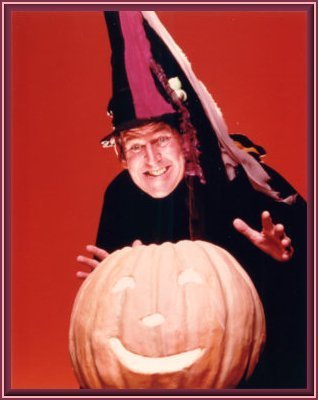
Yes, that wacky Paul Lynde had a Halloween special in 1976. Who knew the Center Square loved Halloween? Because let’s face it, when you think of Halloween, you think Paul Lynde, right? Right?
*crickets*
Okay, just go with me on this.
Lynde starts off the special with a monologue, mostly about how fat he was as a kid. Then he bursts into song with his signature tune “Kids” from Bye Bye Birdie. Joining him at the end is Donny and Marie (Lynde did guest star appearances on their show) and I swear, their teeth shine so white it makes you want to know what toothpaste they used back then. The Osmonds share their luck with the Kennedys when it comes to teeth: pearly white and perfect.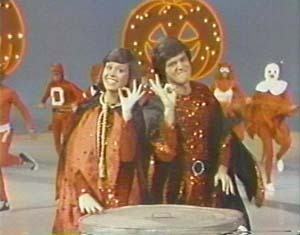
Lynde has a couple of sketches in his special that are, well, lame. It includes him being engaged to a waitress played by Roz “Pinky Tuscadero” Kelly. You might be reading this and thinking “Jennifer, he’s gay.” Yep. This was 1976, and you just have to go with it. You have to watch this for the guest stars. We have Margaret Hamilton playing Lynde’s housekeeper, and oh yeah, she’s a witch!
[image error]
Billie Hayes is Witchypoo!

They help Lynde with his special guests. Florence Henderson sings “Old Black Magic” and gets her groove on in a black dress that makes you think “Mrs. Brady! What would the kids think?’
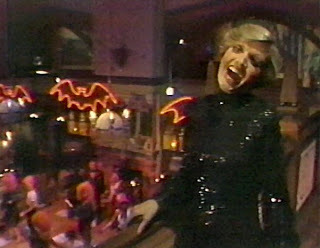
Then comes my favorite part, when Peter Criss from KISS sings “Beth.”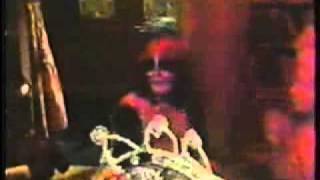
So here’s the deal: I love that song. I’m not a big KISS fan, but when I hear the song I start singing: “Just a few more hours and I’ll be right home to you. I think I hear them calling, oh Beth what can I do?” Now I know the real Beth was probably sitting home thinking “You can come home pal! You’re going to miss Mary Hartman Mary Hartman and I have a bottle of Boone’s Farm on ice!” Beth babe, you got a song out of it! Then at the end the rest of the KISS members surround Peter Criss, like they’re telling him “We told you to dump her. Oh well, it’s a nice slow ballad and it went gold. Continue being sensitive, man!”
Lynde tries to joke with the guys. This goes as well as Michael Bolton’s dancing. “I know how you got your name! Your mothers told you to KISS and make up!” He proceeds to go on “Peter and Paul, is this a religious group?” Oh Paul stop it! You’re killing us!
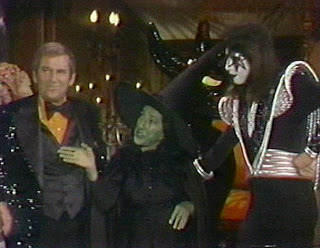
Yet the best comes at the end. Everyone is dancing (except for the KISS guys, they’re too cool) It’s just so 70′s: Tim Conway! Betty White! Florence Henderson! Lynde yet again starts to “flirt” with Roz Kelly, calling her Pinky. She flirts back the best she can. Then she starts to sing “Shake it out/ Shake it around/move it in/move it out/move it around and out/disco baby!” Lynde starts to sing as well, and he exclaims “I love that funky stuff!” This song will stick in your head for years. Trust me on this.
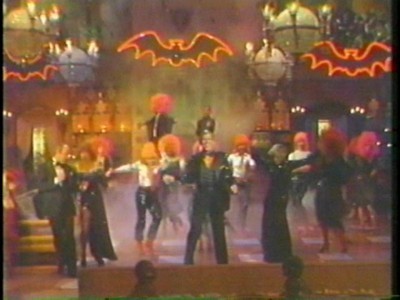
The show ends with Lynde thanking the audience for making him feel “wanted.” He thanks all his stars, and wishes everyone Happy Halloween. It ends with Lynde shaking his booty with Pinky and Witchypoo getting down with Tim Conway.
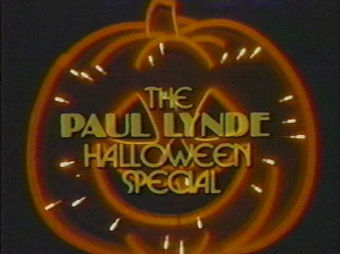
I love the special because it’s perfect to watch when you’re feeling blue—it’s so cheesy, there’s something great to watch a moment captured in time of power ballads, bad flirting, bad jokes. Despite it all, there’s also a spirit of fun as well. Plus, darn it, Paul Lynde looks good in San Francisco Giants colors.
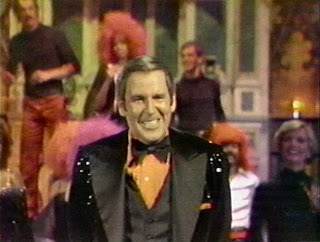
Happy Halloween everyone! Sing the song with me: “Beth I hear you calling, but I can’t come home right now…”
The post Paul Lynde, Thanks For Making Us Laugh… Again appeared first on Jennifer Niven : Everything Books.

